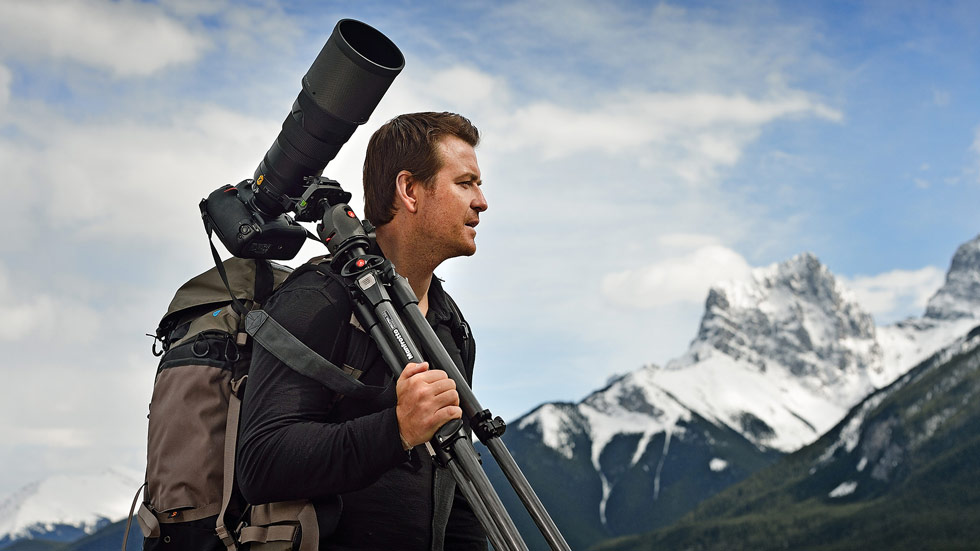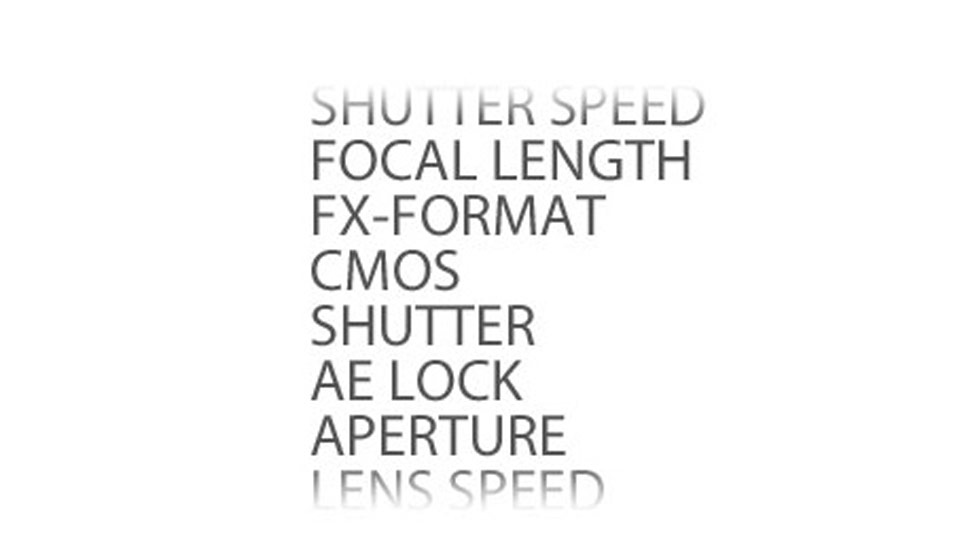How to Jumpstart Your Creativity When You’re Stuck in a Rut
Nikon Ambassadors offer suggestions for bringing back the creativity
It can be easy to fall into a rut, doing the same thing, over and over, but for those whom creativity is key to getting the job done—both photographers and filmmakers—we can’t afford to languish in a limbo-state where the wheels are spinning but the creativity isn’t flowing as easily as it used to. It happens to all of us at one point or another.
We turned to our Nikon Ambassadors to find out what their secrets are for breaking out of a rut and getting back to feeling like you’re on top of your game. Read on to find out what works for them—these ideas just might help you too.
Viktoria Haack reminds us that we all fall into creative lapses sometimes. “I believe that creative lulls are natural and even essential, offering a chance to step back and rediscover inspiration through gentle, unforced activities. By embracing these moments as opportunities for rest and renewal, creativity can unfold naturally. I've found that sometimes stepping back can be just as meaningful as moving forward,” she explains. Immersing yourself into nature without the pressure to create, exploring a different genre of photography, reading poetry, watching movies, or immersing oneself into the art and work of other photographers are all good ways to get the inspiration and creativity back.
Michelle Valberg concurs. “I try to remember it is okay to be in a rut—I acknowledge it with compassion, then I take small, intentional steps to rediscover my spark and climb out at a pace that feels right,” she says.
For Kristian Bogner, reconnecting with nature works wonders. He’ll take a Z 8 or Z 9 and super telephoto lens out for a nature walk. He explains that this helps him to expand his awareness photographing anything that calls to him. “Capturing the details of our world through a long lens connects me with nature and wildlife, but also with the feeling of joy I have for photography and my own child-like enthusiasm,” he notes.
Another technique Kristian uses on a job is to re-focus by changing his mindset: “I take a deep breath, unclick my lens, then click it back in and tell myself I just put on my “Awesome Lens”—I reframe my internal perspective and then the flow in my imagery follows.”
According to Jenny Wong, it depends on what that rut is. “If it's creative new ideas and stories, I simply start reading and talking to strangers—sometimes all it takes is [reading] a scientific research paper that could be better communicated with the right imagery,” she explains.
When it comes to working on a project, and nothing seems to be working or the light is all wrong, but you still need to be productive, she says, “Often it just takes a minute of calming down, accepting the lost expectations and observing quietly to notice the extraordinary. I think overly committing to expectations can get us into a rut of not seeing the opportunities that surround us.”
When all else fails, venture into nature. “For me nature and adventure is my addiction and what compelled me to pick up the camera, and frankly I don't think nature ever goes out of style—the inspiration is always just a step out the door and into a forest,” she adds.
For Monika Deviat who specializes in landscape and night photography, which depend on the weather or specific times of the night or even year, when nature isn’t cooperating, it can get to her. “This can lead to a cycle of not going out at all. To break free from this, I make it a point to head out anyway. Whether it’s a hike with a friend, a spontaneous drive, or just exploring, I let myself be open to whatever catches my eye, even if it’s not part of any plan,” she says.
Michael Fayehun says that he’ll take a vacation to clear his head. “I spend a lot of time doing my favorite things like playing soccer, attending live concerts—pretty much anything fun that [puts] me more in a relaxed mood.”
Sean LeBlanc turns to activities that spark his imagination beyond photography when stuck in a creative rut. “Playing the guitar or ukulele becomes part of my daily routine, allowing creativity to flow. Watching studio lighting deconstructions and behind-the-scenes setups will often create new ideas, while movies offer inspiration for lighting and composition. I also prioritize visiting local museums or art galleries wherever I travel,” he explains.
Tzara Maud says, “When I feel stuck in my creativity, I choose a subject or theme that makes me react or feel something, and I learn about it, focus on it, and try to explain it with pictures. I go for a walk with my camera, or I create a new exhibition.”
For Sam Sciarrino, “returning to the fundamentals of photography and focusing on the core principles of light, perspective and composition are important.” Developing projects outside of his regular work leads to creativity as does exploring new ideas and themes.
Martin Gregus will immerse himself in nature or go for a quiet drive. “I think being comfortable alone is key to being happy.” Other times he’ll find that connecting with others works. “Recently I’ve also started to surround myself with more creative people so getting together with them for a drink or collaborating on a project allows me to be outside more while doing what I love.”
Lu Chau says he’s gets inspired by seeing what others are doing. “I’m finding inspiration through art by visiting galleries, attending immersive experiences, exploring new cities without an agenda, and connecting with fellow creatives offline.” He’s also hosting his own industry studio parties in Toronto, with the goal “to bring together talents from various creative sectors and spark collaboration and discussion which keeps my creative flow going.”
Taku Kumabe turns to social media to spark his creativity. “Rather than relying on your personal feed which might be the same type of photography seen day after day, seek out different genres or other accounts that you don’t [normally] follow to see what they’re doing.” If he sees something of interest, he’ll dive deeper which can bring about new ideas.
And if all else fails, “a simple walk out in nature does wonders to clear your mind and see things from a fresh perspective,” he notes.
Véronique Duplain says when she’s lost the creativity, she slows down. “When things aren’t working out, the first thing I do is take a deep breath. Then, I create some time to explore the subject I want to tackle. Life moves so fast that we often forget to pause, sit with our ideas, and organize them.”
She explains that in this digital age we live in, she will write down her thoughts and ideas with a pencil on paper. “It’s slower and forces me to stop and truly be present with my thoughts. If that’s not enough, I call loved ones and bounce ideas off them—we’re social creatures, after all. I interpret their reactions, which helps me understand how my ideas are perceived and whether I need to adjust them. Often, these two simple actions are enough to unblock creativity!”
Preston Kanak also ventures out of doors. “When I’m stuck in a rut, I start by changing my environment—getting outside and connecting with nature. There’s something grounding about the outdoors that clears mental clutter and sparks new ideas.”
He’s also realized that creativity isn’t just about external inspiration; it’s also about internal alignment. “When I feel stuck, I take time to reflect on my values. Am I creating work that resonates with what I care about most? Often, a creative block is a signal that something deeper is out of sync. Understanding the ‘why’ behind the rut—whether it’s burnout, fear, or simply being disconnected from my purpose—helps me move forward with more clarity.”
“Analyzing why I’m feeling the way I am allows me to reset my approach. Other times, it’s about simplifying—letting go of perfectionism and just starting, even if it feels messy,” he adds.
Tony Beck sums it up: “With all of life's distractions, interruptions, and modern madness, inspiration and creativity can suffer. Even when life slows down, getting yourself into a creative zone remains elusive. Regardless, keep at it with determination. Creativity can sneak up on you and photo opportunities can materialize out of nowhere. When this happens, staying clear and focused should perpetuate your creativity. Life is good when you're in ‘the zone.’”
Whether you revisit a past project or collaborate with others, go to a movie, museum or do something else not work related, take a quiet drive to clear your mind, or go for a walk in nature to reignite that spark, you're sure to find the creativity return and with it the excitement of new-found passion.
Learn more about the Nikon Canada Ambassadors.




